Reaching your financial goals is not just about saving money—it’s about building a stable, intentional, and resilient future. Whether your goals involve paying off debt, saving for a home, building wealth, or retiring early, it takes a clear strategy, consistent effort, and often a mindset shift.
In this guide, we’ll explore practical strategies, goal-setting techniques, money-saving hacks, and the role of professional guidance to help you take charge of your financial future.
Why Setting Financial Goals Matters
Financial goals act as your personal roadmap. They keep you focused, help prioritize your spending, and provide a sense of purpose behind your daily money decisions. Without them, it’s easy to drift—spending impulsively and saving sporadically.
With the right plan and mindset, even the most ambitious financial goals become achievable.
1. Create a Clear and Specific Financial Plan
Having a plan is the difference between hoping and achieving.
How to Build Your Plan:
- Start with your “why.” Do you want to be debt-free, own a home, or retire early?
- Break it into short-, medium-, and long-term goals.
- List specific actions: What can you do each week/month to move closer?
- Include a timeline for each goal.
- Build in checkpoints to review progress.
Example: “Save $5,000 for a vacation in 18 months by saving $278/month.”
Review Regularly
Your financial situation will change. Life happens—job changes, moves, emergencies, kids. Update your plan when these happen to stay on track.
2. Set SMART Financial Goals
A goal like “I want to be rich” is vague. A SMART goal gives you a clear, actionable path.
SMART = Specific, Measurable, Achievable, Relevant, Time-bound
Instead of:
“I want to save more.”
Try:
“I want to save $10,000 in two years by setting aside $417/month.”
SMART goals are easier to measure, more motivating to chase, and help you spot roadblocks faster.
3. Effective Strategies for Saving Money
Saving money isn’t about depriving yourself—it’s about prioritizing what matters most. Even small savings can snowball over time when done consistently.
Create and Stick to a Budget
- Use tools like Mint, YNAB, or EveryDollar.
- Track every dollar: income, fixed expenses, variable expenses, and savings.
- Build a zero-based budget, where every dollar has a job.
Automate Your Savings
- Set up auto-transfers from checking to savings after each paycheck.
- Use “round-up” apps like Acorns or Qapital to stash spare change.
Cut Back on Non-Essentials
- Cancel unused subscriptions or rotate streaming services.
- Cook at home instead of eating out.
- Set a monthly “fun budget” to control impulse buys.
Negotiate Bills and Expenses
- Call your internet, insurance, or phone provider for discounts or loyalty pricing.
- Compare rates for auto/home insurance or credit card APRs.
Bonus Tips:
- Use cashback sites like Rakuten or apps like Ibotta.
- Buy used instead of new.
- Set a 24-hour rule before making non-essential purchases.
4. Build an Emergency Fund
A crucial part of achieving financial goals is protecting your progress. Emergencies happen—car repairs, medical bills, job loss.
How to Start:
- Aim for an initial $1,000 starter emergency fund.
- Build toward 3–6 months’ worth of expenses.
- Keep it separate from your regular savings, ideally in a high-yield savings account.
5. Reduce and Eliminate Debt
Debt often stands in the way of financial goals, eating away at your income via interest payments.
Strategies to Pay Off Debt:
- Debt snowball: Pay off smallest balance first for momentum.
- Debt avalanche: Pay off highest interest debt first to save money.
- Balance transfers: Use 0% APR cards (carefully) to consolidate.
- Refinance loans: If you can get a better rate, refinance to reduce total interest.
6. Consider Professional Financial Advice
You don’t have to do this alone. A certified financial advisor can help:
- Assess your full financial picture
- Optimize savings, retirement, and investments
- Provide accountability
- Help plan for life milestones (buying a house, kids, career shifts)
How to Find a Financial Advisor:
- Ask for referrals from trusted friends or family.
- Use databases like NAPFA.org, XYPlanningNetwork.com, or CFP.net.
- Look for a fiduciary advisor—someone legally obligated to act in your best interest.
7. Consider Vanguard or Similar Financial Planning Firms
Companies like Vanguard offer access to low-cost index funds, retirement planning tools, and certified financial advisors. They’re a trusted name in the investing world and offer:
- Transparent fee structures
- Long-term, diversified investment strategies
- Personalized financial plans
Other affordable, reputable alternatives include Charles Schwab, Fidelity, and Betterment.
8. Stay Consistent and Track Progress
Success doesn’t come overnight—but your discipline pays off.
Track regularly:
- Use spreadsheets or apps to log progress
- Celebrate small wins: first $1,000 saved, first debt paid off, budget streaks
Mindset is Key:
- Avoid comparing your financial journey to others.
- Stay flexible—adjust goals when life throws curveballs.
- Keep your “why” visible—use visuals or goal boards.
Your Financial Future Starts Now
Achieving your financial goals takes time, intention, and commitment—but every small step adds up. Whether you’re just getting started or refining your existing plan, the combination of SMART goals, disciplined savings, and (when needed) professional support can help you gain confidence and momentum.
Key Takeaways
- Create a clear, personalized financial plan.
- Set SMART goals that are Specific, Measurable, Achievable, Relevant, and Time-bound.
- Save money strategically through budgeting, automation, and reduced expenses.
- Eliminate debt using methods like the snowball or avalanche approach.
- Build an emergency fund to avoid setbacks.
- Consider professional advice from a financial advisor or firm like Vanguard.
- Track your progress and stay motivated by celebrating wins.







